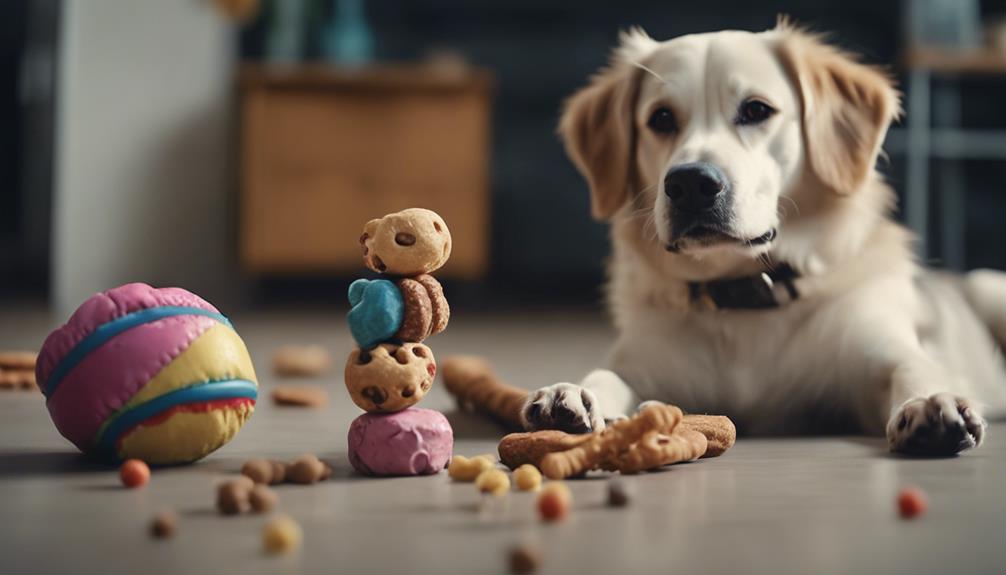In the realm of canine training, mastering basic cues lays the groundwork for effective communication between pet and owner.
A professional's insights into optimizing training sessions and tailoring rewards can significantly impact your dog's learning experience.
By following expert guidance on consistency, session structure, and individualized motivation, you can unlock the potential for a more harmonious relationship with your furry companion.
Understanding these core principles is essential for fostering a strong foundation in your dog's education.
Key Takeaways
- Consistent cues like Come, Sit, Stay are crucial for effective learning and communication.
- Short, engaging training sessions with tailored rewards optimize learning and motivation.
- Expert guidance enhances training by providing structure, motivation, and personalized tips.
- Mastering basic cues with a strong foundation leads to a harmonious pet-owner relationship.
Establish Consistent Cue Communication
For successful dog training, establishing consistent cue communication is key to fostering effective learning and behavior in your furry companion. Dogs thrive on routine and clarity, so using the same cues for commands like Come, Sit, Stay, and others helps them understand what is expected of them.
Consistency builds trust and confidence in your dog, making training sessions more productive. It is also essential for all family members to use the same cues to avoid confusion.
Crate training can be a valuable tool in maintaining consistency and providing a safe space for your pet. By ensuring a consistent approach to cue communication, you pave the way for a well-behaved and responsive canine companion.
Optimize Training Sessions
Establishing a structured approach to training sessions is fundamental in maximizing the effectiveness of your dog's learning and behavior development. To optimize training sessions, it is crucial to keep them short and engaging. For puppies, 5-10 minute sessions are ideal, while older dogs can benefit from 15-minute increments. Repetition plays a key role in learning, so be sure to practice consistently. End each session on a positive note to keep your dog motivated. Consider the table below for a quick reference on how to make the most out of your training sessions:
| Training Session Tips | Description |
|---|---|
| Keep sessions short | 5-10 minutes for puppies, 15 minutes for older dogs |
| Be consistent | Use the same cues and routines every time |
| Use positive reinforcement | Reward good behavior to encourage learning |
| Have a structured plan | Set goals for each session and track progress |
Personalize Rewards for Effective Learning

To enhance the effectiveness of your dog's learning process, it is essential to tailor rewards based on your furry companion's individual preferences and motivations. Understanding what truly motivates your dog is key to successful training.
Some dogs may be food-driven, responding best to treats, while others may prefer playtime or toys. By personalizing rewards, you can keep training sessions engaging and enjoyable for your pet.
Pay attention to your dog's reactions during training to gauge which rewards elicit the best responses. Experiment with different types of rewards to see what works best for your dog, and be willing to adjust based on their reactions.
Conclusion
In conclusion, adherence to consistent cue communication, optimization of training sessions, and personalized rewards are key elements in facilitating effective learning for your canine companion.
By implementing these strategies, you can create a structured and harmonious learning environment that enhances the bond between you and your pet.
Consistency, patience, and understanding of your dog's needs are essential for successful training outcomes.
Seek guidance from a professional trainer for more advanced skills to further nurture your pet's development.




